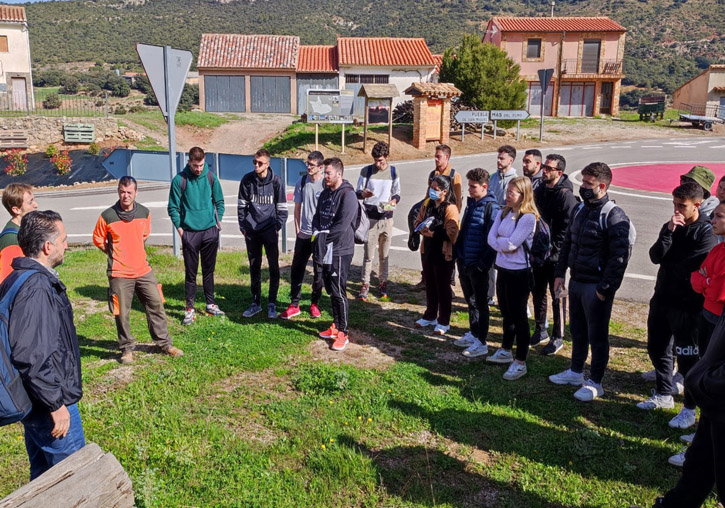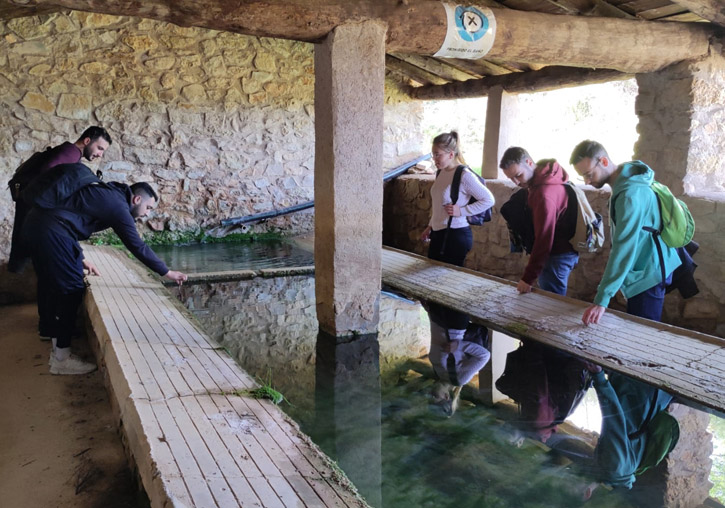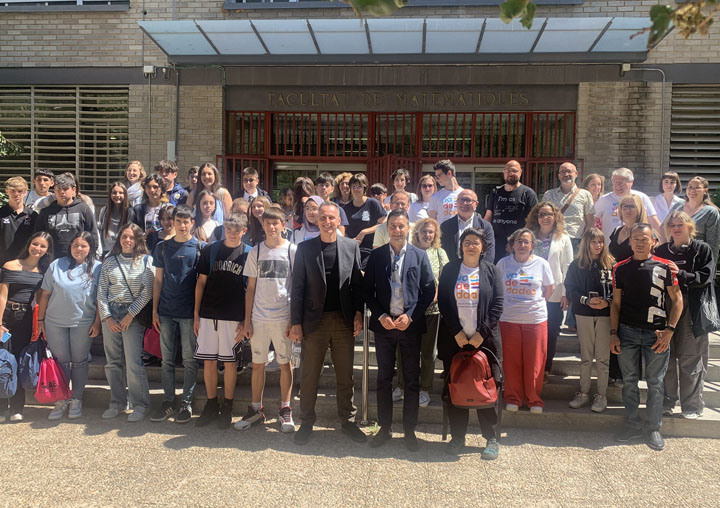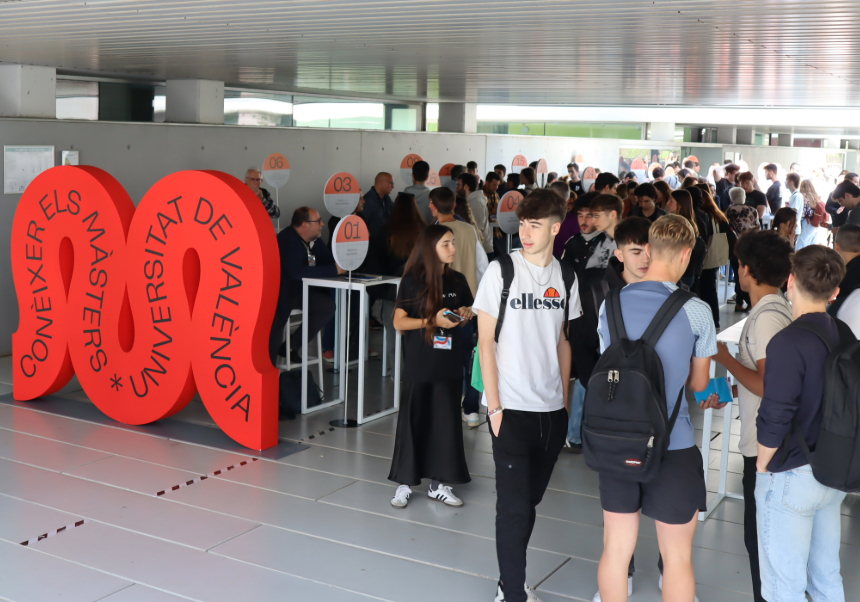Students of the University of Valencia analyse and will make visible the heritage of the Rincón de Ademuz
- Scientific Culture and Innovation Unit
- April 29th, 2022

Teachers and 120 students of the Degree in Geography and the Environment, and the Master’s Degree in Secondary Education Teacher Training of the University of Valencia (UV) are developing today, Friday, in the Rincón de Ademuz an innovative project that values the territorial resources of the region, one of the Valencian areas most affected by depopulation. In the program, the university students are trained in the morning in the Puebla de San Miguel Natural Park, and in the afternoon they will share knowledge with the students of the Ademuz Secondary School, about the history, folklore and culture of Rincón.
The objective of the PID Geodidact Learning Corner program is to make the Rincón de Ademuz visible and formulate a teaching proposal in which the student body contributes to the enhancement of this territory of the Valencian interior, “being actively and directly involved in the recognition and dissemination of its territorial and human resources”, points out Professor Emilio Iranzo, vice-dean of the Faculty of Geography and History, and director of the UV Landscape Chair. This work proposal, coordinated between the UV, the management of the natural park and that of the Ademuz Secondary School, also reinforces local self-esteem and relations between university students and those of the secondary school. UV teachers Paula Jardón, Jaime Escribano, Ana Belén Ruescas and Ghaleb Fansa also participate in the program.
Thus, during this Friday morning, students are expected to identify, analyse and describe the environmental, historical and landscape resources of the Puebla de San Miguel Natural Park, one of the 22 existing in the Valencian Community, and in which the Valencian peak of higher altitude, the Alto de las Barracas, makes it a very outstanding place, as well as the flora and fauna of the existing Mediterranean high mountains. The inspection work will focus on the traditional orchards, laundries, the most significant buildings in the urban area of Puebla de San Miguel, the unique trees in the area, the old weaving mill and the Barranco del Javandal.
The second activity, which will take place in the afternoon, will be attended by Secondary Education and Baccalaureate students from the Ademuz Secondary School and will analyse the historical, ethnological, cultural and festive aspects of the region. In both cases, with the information collected and contrasted, it is intended that some interpretive panels that form part of the natural park and of the town of Ademuz itself can be derived from it.
The students that went to the Rincón de Ademuz region are part of four subjects of the Degree in Geography and the Environment (Landscape Construction, Protected Natural Areas, Biogeography and Geographic Information Systems) and two subjects of the Master’s Degree in Secondary Education Teacher Training (Geography and History Learning and Teaching, Teaching Innovation and Initiation to Educational Research in the Specialty of Geography and History). In addition, this teaching program has received 1,000 euros for its implementation, the maximum funding from the Permanent Training and Innovation Service (SFPIE) of the University of Valencia for this type of activity.
A region full of opportunities
The Rincón de Ademuz is the least populated region of Valencia, with 2,221 inhabitants in 2021 and a population density of 6 inhabitants per square kilometre, which places it among the most unpopulated areas in Spain. In addition, in recent decades it has experienced a significant demographic recession, which has stabilised in recent years. However, its territorial resources make it a very attractive area, both for Valencians, as well as for the neighbouring communities of Aragón and Castilla la Mancha.
The Rincón has very valuable landscape and cultural resources, such as Alto de las Barracas, the highest peak in Valencia or El Gavilán (the third one) and other natural park resources such as juniper forests (Las Blancas), monumental trees (el Pino Vicente) or spaces with privileged views (the Mirador de Mirar Bueno). Also historic towns such as Ademuz and Castielfabib; and festivals such as the esperiega apple, a native variety. The surroundings of the Turia and Ebrón rivers are highly appreciated, the latter with its gorges, the Rambla del Val and especially the Bohilgues river, which in autumn are stained with the polychrome of the deciduous forests and the orchards on their banks. There are also very significant recreational areas such as La Vega de Vallanca, Canalón de Negrón, Los Arenales (Ademuz) or a rich archaeological heritage (the Iberian settlement of La Celadilla de Ademuz, among others).
File in: Estudis , Facultat de Geografia i Història , Facultat de Magisteri , Màsters Oficials , Grau




















